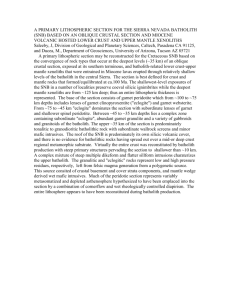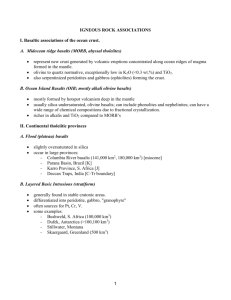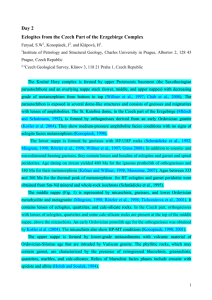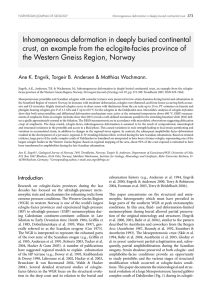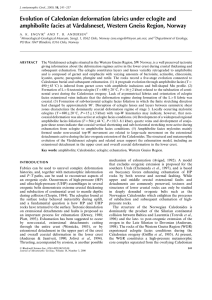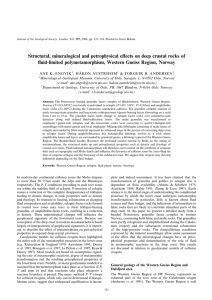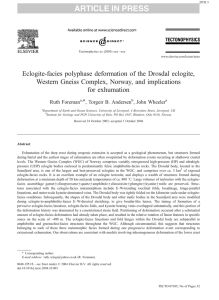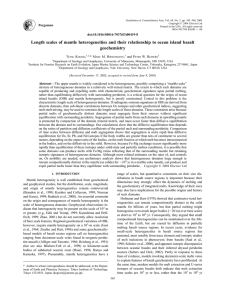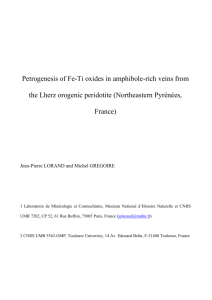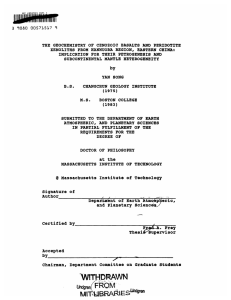The spatial extent and characteristics of block fields in Alpine areas
advertisement
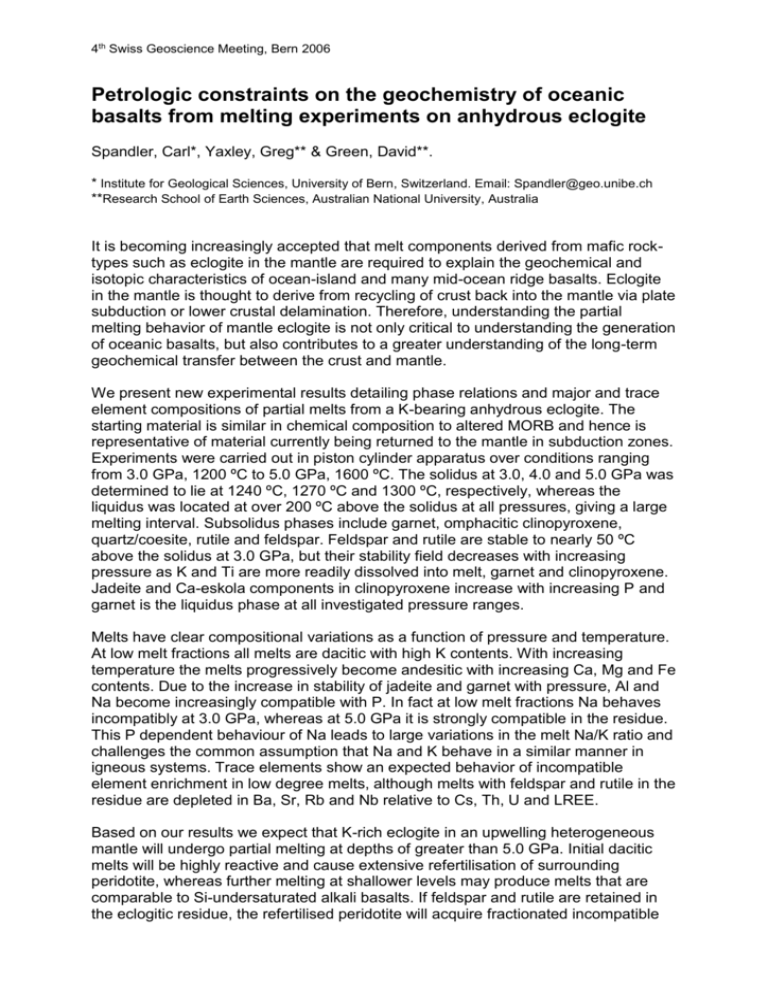
4th Swiss Geoscience Meeting, Bern 2006 Petrologic constraints on the geochemistry of oceanic basalts from melting experiments on anhydrous eclogite Spandler, Carl*, Yaxley, Greg** & Green, David**. * Institute for Geological Sciences, University of Bern, Switzerland. Email: Spandler@geo.unibe.ch **Research School of Earth Sciences, Australian National University, Australia It is becoming increasingly accepted that melt components derived from mafic rocktypes such as eclogite in the mantle are required to explain the geochemical and isotopic characteristics of ocean-island and many mid-ocean ridge basalts. Eclogite in the mantle is thought to derive from recycling of crust back into the mantle via plate subduction or lower crustal delamination. Therefore, understanding the partial melting behavior of mantle eclogite is not only critical to understanding the generation of oceanic basalts, but also contributes to a greater understanding of the long-term geochemical transfer between the crust and mantle. We present new experimental results detailing phase relations and major and trace element compositions of partial melts from a K-bearing anhydrous eclogite. The starting material is similar in chemical composition to altered MORB and hence is representative of material currently being returned to the mantle in subduction zones. Experiments were carried out in piston cylinder apparatus over conditions ranging from 3.0 GPa, 1200 ºC to 5.0 GPa, 1600 ºC. The solidus at 3.0, 4.0 and 5.0 GPa was determined to lie at 1240 ºC, 1270 ºC and 1300 ºC, respectively, whereas the liquidus was located at over 200 ºC above the solidus at all pressures, giving a large melting interval. Subsolidus phases include garnet, omphacitic clinopyroxene, quartz/coesite, rutile and feldspar. Feldspar and rutile are stable to nearly 50 ºC above the solidus at 3.0 GPa, but their stability field decreases with increasing pressure as K and Ti are more readily dissolved into melt, garnet and clinopyroxene. Jadeite and Ca-eskola components in clinopyroxene increase with increasing P and garnet is the liquidus phase at all investigated pressure ranges. Melts have clear compositional variations as a function of pressure and temperature. At low melt fractions all melts are dacitic with high K contents. With increasing temperature the melts progressively become andesitic with increasing Ca, Mg and Fe contents. Due to the increase in stability of jadeite and garnet with pressure, Al and Na become increasingly compatible with P. In fact at low melt fractions Na behaves incompatibly at 3.0 GPa, whereas at 5.0 GPa it is strongly compatible in the residue. This P dependent behaviour of Na leads to large variations in the melt Na/K ratio and challenges the common assumption that Na and K behave in a similar manner in igneous systems. Trace elements show an expected behavior of incompatible element enrichment in low degree melts, although melts with feldspar and rutile in the residue are depleted in Ba, Sr, Rb and Nb relative to Cs, Th, U and LREE. Based on our results we expect that K-rich eclogite in an upwelling heterogeneous mantle will undergo partial melting at depths of greater than 5.0 GPa. Initial dacitic melts will be highly reactive and cause extensive refertilisation of surrounding peridotite, whereas further melting at shallower levels may produce melts that are comparable to Si-undersaturated alkali basalts. If feldspar and rutile are retained in the eclogitic residue, the refertilised peridotite will acquire fractionated incompatible 4th Swiss Geoscience Meeting, Bern 2006 element ratios (e.g., Na/K, Ba/Th, Nb/U). Subsequent peridotite melting may be a direct source of many ocean island basalt suites. In this case, there is no need to appeal to ancient subduction-related processes to cause the fractionated incompatible trace-element ratios that are found in some of these magmas. Most importantly, this result demonstrates that elements of similar compatibility in mantle peridotite can be strongly fractionated if basalt source regions contain eclogite components. We stress that geochemical interpretations of oceanic basalts should include considerations of the phase petrology of a range of potential source components.

